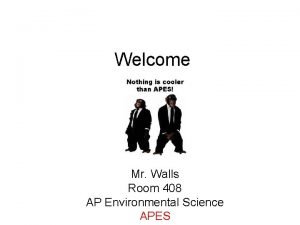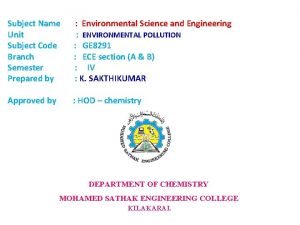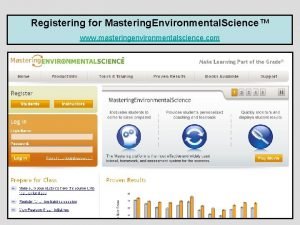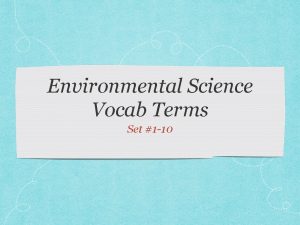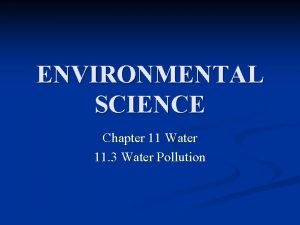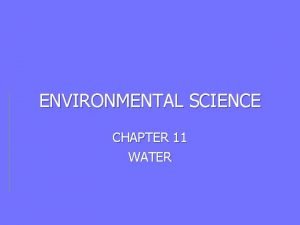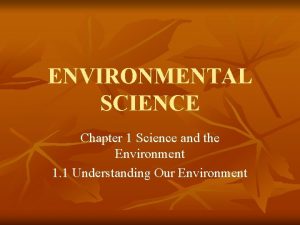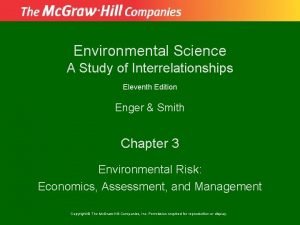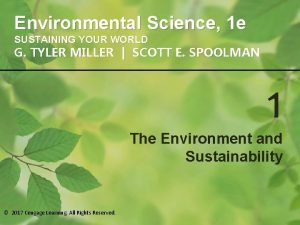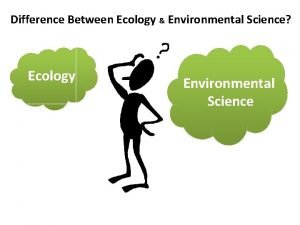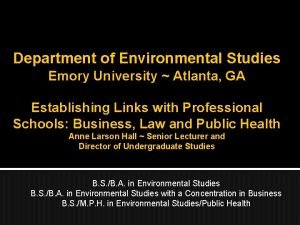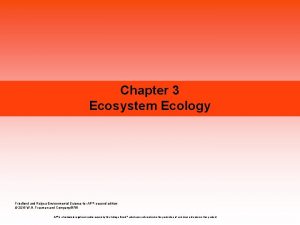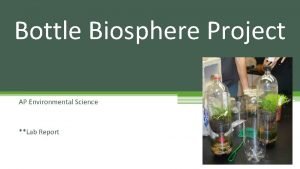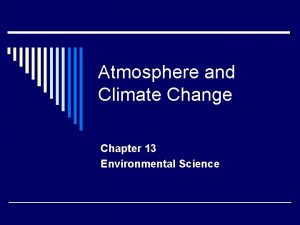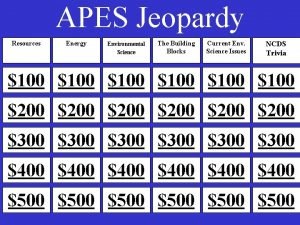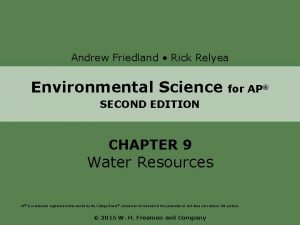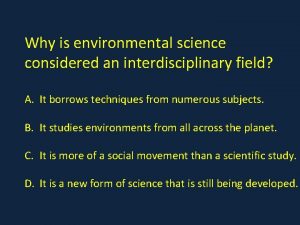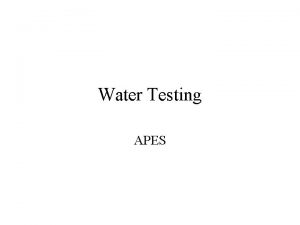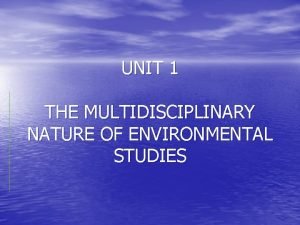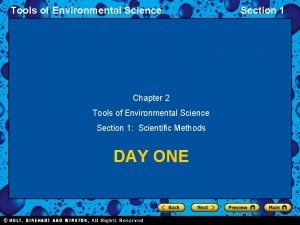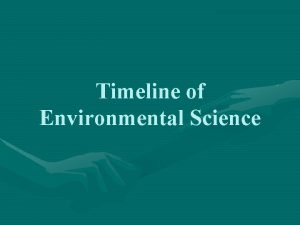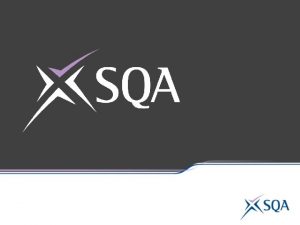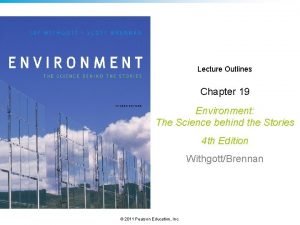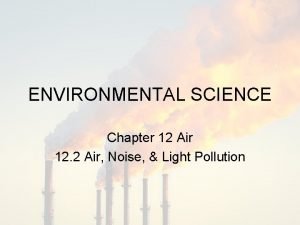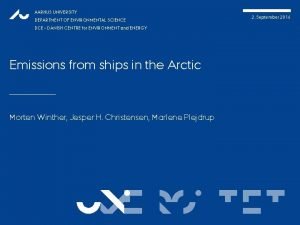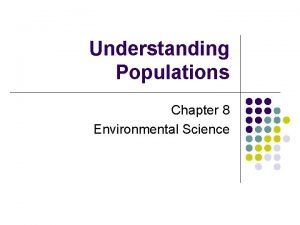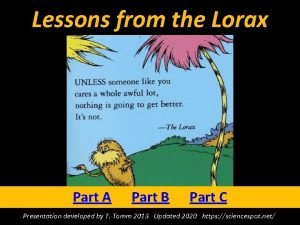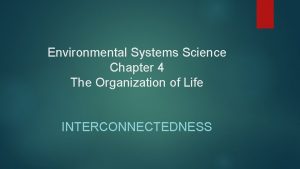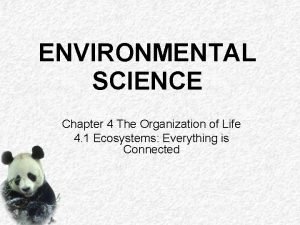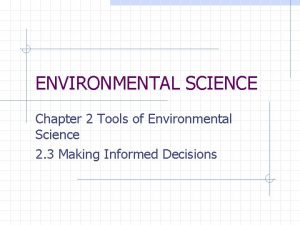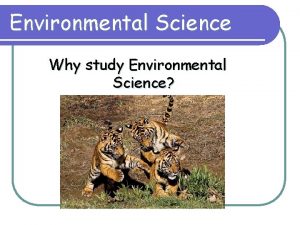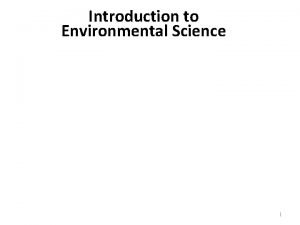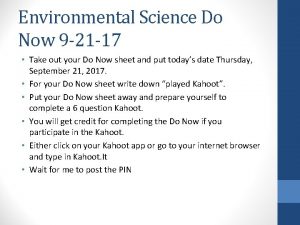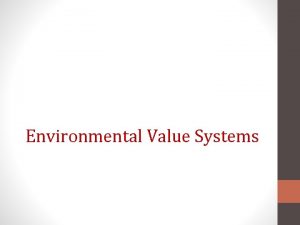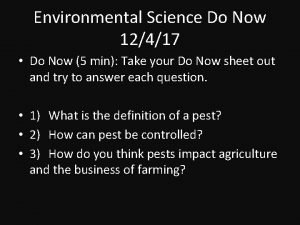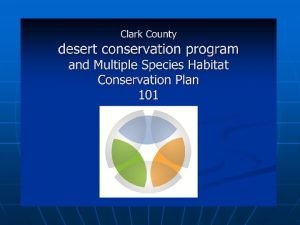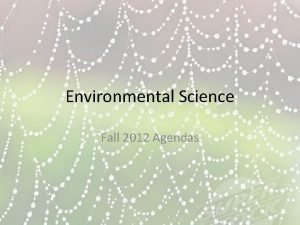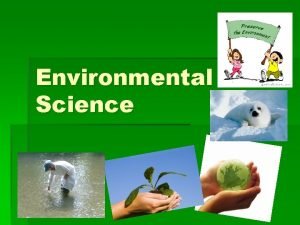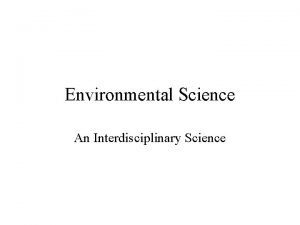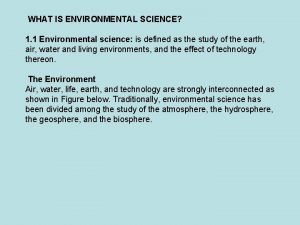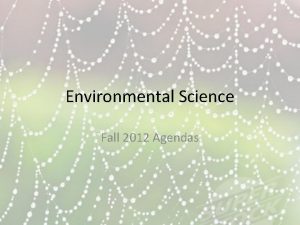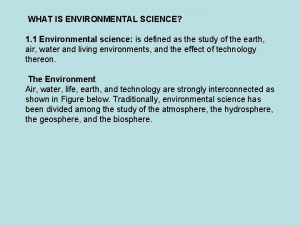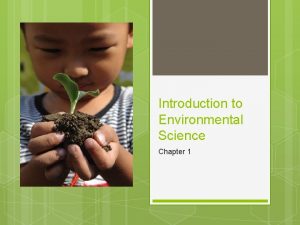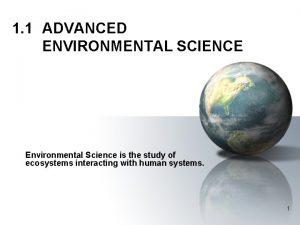Environmental Science Do Now 12 15 17 Take








































- Slides: 40

Environmental Science Do Now 12 -15 -17 Take your Do Now sheet out and UNSCRAMBLE each mineral-related term. 1) ldios 2) meiarln 3) surtel 4) ogiacnnri 5) seidxo • • • 6) nvetia 7) agavcele 8) ilconis 9) rastek 10) stsnoicnalie

Environmental Science Do Now 12 -15 -17 Take your Do Now sheet out and UNSCRAMBLE each mineral-related term. 1) ldios [SOLID] SOLID 2) meiarln [MINERAL] MINERAL 3) surtel [LUSTER] LUSTER 4) ogiacnnri [INORGANIC] INORGANIC 5) seidxo [OXIDES] OXIDES • • • 6) nvetia [NATIVE] NATIVE 7) agavcele [CLEAVAGE] CLEAVAGE 8) ilconis [SILICON] SILICON 9) rastek [STREAK] STREAK 10) stsnoicnalie [NONSILICATES] NONSILICATES

Reminder…Q 2 Progress Report Grades will close soon!!! • Quarter 2 Progress Reports Posting Window Now Open! • The Q 2 progress report posting window is open now and closes at 5 pm on December 20. • I will be closing my grades on Monday, December 18, 2017 at 4 pm!!! pm

Homework – To be collected!!! • Name 5 types of ore minerals mined in the state of Maryland?

Objective • The student will know the types of mining practices and resources obtained from mining by taking notes, performing a close read, answering TDQs and an exit ticket. • Mastery Level: – 70% or better on concept check questions

Mining and Mineral Resources Vocabulary Words • • • • • Mine Mining Mineral Native element Ore minerals Gangue minerals Metallic minerals Nonmetallic minerals Hydrothermal solution Evaporates Magma Alloy Gemstone Mineralization Deposit Subsurface mining Room and pillar mining • • • • • Long wall mining Solution mining Surface mining Open-pit mining Overburden Quarrying Aggregates Gravel Solar evaporation Placer deposit Smelting Flux Molten Slag Subsidence Reclamation Surface Mining Control and Reclamation Act of 1977 (SMCRA)

Engage • Students will watch a You. Tube video called “ 10 Minerals More Valuable Than Gold”. • Guide Question: Name a mineral more precious than gold. • Source: https: //www. youtube. com/watch? v=m. Gt. Tes 2 8 g. TU

Explore • Students will perform a close read on “Minerals”. • Annotation Points to Earn: 40 points or better [Period 5/6 will use pens/pencils instead of highlighters to underline important text. ] • Source: http: //www. ducksters. com/science/earth_sci ence/minerals. php

Explore – Close Read Article on Minerals • Text-Dependent Questions to Answer – – – – – 1) What is the main idea of the article? 2) What are the characteristics of minerals? 3) Explain the 6 major properties of minerals. 4) Which mineral has a value of 10 on the Moh’s scale? 5) Compare and contrast silicates with non-silicates. 6) Define native element. Give 3 examples of native elements. 7) What is chromite? 8) Over 90% of the Earth’s crust is made of what type of mineral? 9) What is a gem? – 10) Name the eight minerals that make up the Earth’s crust.

Today’s notes are worth 210 pts. Mining and Mineral Resources

16. 1 Minerals and Mineral Resource A. What is a Mineral? • Mineral is a naturally occurring, inorganic solid that has a characteristic chemical composition and physical properties. • The atoms of minerals are arranged in regular repeating geometric patterns. • Native elements are minerals made of only elements (gold, silver and copper) • Most minerals are compounds


B. Ore Minerals • Ore minerals are minerals that are valuable and economical (cheap) to extract. • Gangue (pronounced “gang”) minerals are minerals that have no commercial value • 1. Metallic Minerals • Metals conduct electricity, have shiny services and are opaque • Valuable metallic minerals are native elements such as gold, silver and copper. • 2. Nonmetallic Minerals • Nonmetals tend to be good insulators, have shiny or dull surfaces and may allow light to pass through them. • Nonmetallic minerals can be native elements or compounds.

B. Ore Minerals

C. How do Ore Minerals Form? The types of minerals that form depend on the environment in which they form 1. Hydrothermal Solutions • Hydrothermal solutions are hot subsurface waters that contain dissolved minerals. • As they flow through cracks in rocks they dissolve minerals • New minerals crystallized out of the solutions then fill fractures to form ore deposits called veins 2. Evaporites • Water in the seas or lakes evaporates deposits of salts are left behind • Evaporates form in arid regions where rates of evaporation are high • Include rock salt and gypsum.


D. Mineral Resources and their Uses • Some metals can be pounded or pressed into various shapes or stretched very thinly • Some are good conductors of heat and electricity • Alloys are formed when two or more metals are combined • Nonmetals are most widely used minerals in the world • Gemstones are nonmetallic minerals prized purely for their beauty, rarity, or durability.

19. 2 Mineral exploration and Mining A. Mineral Exploration • 1 st step in finding an ore deposit is exploring rock for mineralization. • Planes carry instruments that identify patterns in the land • 2 nd step rock samples are taken from the areas and analyzed to determine ore grade

B. Subsurface Mining • Subsurface mining is how ore deposits beneath Earth’s surface are collected. • Room-and-pillar mining is a common method used to extract coal and salt. • Networks of entries (rooms) are cut into a horizontal layer of coal. • Between each room is a pillar of coal left to support the roof. • When mining is complete the pillars of coal are removed.

1. Longwall Mining • Longwall mining is a more efficient way to remove coal form a subsurface seam. • A machine (shearer) moves back and forth across the face of a coal seam. • The coal is sheared from the surface and falls on a conveyor then transported out of the mine. 2. Solution Mining • Soluble mineral ores can be removed by solution mining using very hot water. • Hot water is injected into the oar and dissolves it. • Compressed air is pumped into the dissolved ore and lifts it to the surface.

Concept Check Questions • 1) What is a mineral? • 2) What are ore minerals? • 3) What are gangue minerals? • 4) Explain HOW ore minerals form. • 5) Describe 3 uses for mineral resources/ • 6) What are the two major steps in mineral exploration? • 7) What is subsurface mining used for? • 8) What is longwall mining used for? • 9) What is solution mining? • 10) In solution mining, what dissolves the minerals?

C. Surface Mining • Surface mining methods used when ore deposits are located close to Earth’s surface. • Open-pit mining is often used to mine large quantities of near-surface • Ore is mined downward, layer by layer.

1. Surface Coal Mining • Overburden is rock that covers near-surface coal seams • 1 st step is to remove and set aside the soil • 2 nd overburden is removed by heavy equipment. • 3 rd loaders enter the pit and remove the exposed coal • 4 th once coal is removed the pit is filled with overburden, contoured and covered with the soil

2. Quarrying • Building stones (granite and marble) are mined in quarries. • Aggregates (sand, gravel, and crushed rock) are the main products of quarrying.

3. Solar Evaporation • Solar evaporation is the process of placing sea water into enormous shallow ponds. • Sun evaporates the water and increases the concentration of sodium chloride • This method of salt production is used in areas that receive little rainfall and have high evaporation rates. • Solar evaporation is used largely in developing countries and 30% of worlds salt comes from solar evaporation.

D. Placer Mining • Placer deposits are minerals that are concentrated by wind and water into surface deposits. • Streams transport mineral grains to a point where they fall to the streambed and are concentrated. • Stream placers often occur at bends in rivers where the current slows. • Gold, diamonds and other heavy minerals are mined by dredging.

E. Smelting • Smelting is where crushed ore is melted at high temperatures in furnaces to separate impurities from molten metal. • Flux bonds with impurities and separates them from the molten metal • Molten metal falls to the bottom of the furnace and is recovered. • The Slag (impurities)form a layer on the top • Gases (sulfur dioxide) are captured so they do not enter the environment

F. Undersea Mining • Ocean floor contains significant mineral resources • Cost and great waters depths at which minerals are found are two reasons undersea mining has not been successful.


16. 3 Mining Regulations and Mine Reclamation • Because of environmental impacts of mining, it is the most heavily regulated industries in the US. • Reclaiming the land or returning it to its original condition after mining is a part of every surface coal mining operation. A. The Environmental Impacts of Mining • Billions of dollars are spent to clean up abandoned mines.

1. Air and Noise Pollution • At surface coal mines dust is produced by removing, loading, hauling and dumping soil and overburden. • Dust is also produced when ore is blasted apart • Noise is created by equipment and blasting • Most surface mines are not located near urban populations • Regulations in US forbid mining operations to allow dust or noise t exit the area being mined

2. Water Contamination • Water resources can be negatively impacted by mining • Containments can wash into streams where they can harm or kill aquatic life • Minerals that contain a lot of sulfur and react with water to produce dilute sulfuric acid.

3. Displacement of wildlife • Removing soil from a surface mine site strips away all plant life. • With the removal of plants animals will leave the area • When the soil is returned to the site different plants and animals may establish themselves. • Dredging disturbs river bottoms and destroys aquatic plant live. • Disturbance of a riverbed can cause sediments to contaminate a river for up to 10 km

4. Erosion and Sedimentation • Excess rock from mines is dumped into large piles called dumps. • Running water erodes unprotected dumps and may harm water quality and aquatic life 5. Soil Degradation • Soil at a mine is removed from the uppermost layer downward • If soils is not removed and stored in separate layers the soil may be nutrient poor when it is reclaimed. • Soil rich in sulfur once exposed t water and oxygen release acid. • If acidified soil is returned to the mine site it may be difficult for plants to grow.

6. Subsidence • Subsidence is the sinking of regions of ground with little or no horizontal movement. • Can occur when pillars in a mind collapse or the mine roof or floor fails • Buildings, houses, roads, bridges, underground pipelines and utilities may be damaged 7. Underground Mine Fires • Fires in underground coal seams are one of the most serious environmental consequences of coal mining • Lighting, forest fires and burning trash can cause coalseams fires. • These fires are hard to put out and often left to burn out (which may take decades). • They release smoke and gasses that can cause respiratory problems.

B. Mining Regulation and Reclamation • Mines in US are regulated by federal and state laws • Mining company must comply with Clean Water Act and the Safe Drinking Water Act. • All mining operations must comply with the Endangered Species Act.

1. Reclamation – Reclamation is the process of returning land to its original or better conditions after mining is completed. – The Surface Mining control and Reclamation Act of 1977 (SMCRA) create a program for the regulation of surface coal mining. – The act set standards that minimize the effects of coal mining on environment

2. State Regulation of Mining – Mining companies must obtain permits before mining – A bond forfeiture program is where a company must post a funds (a bond) before mining project begins – The states use the funds to reclaim the sit if the company does not reclaim the site according to the standards. – State agencies are responsible for inspecting mines to ensure compliance with environmental regulations. – Pennsylvania has large projects to reclaim abandoned mine lands.

Extend - Concept Check Questions

Evaluate – Exit Ticket Question
 Rule of 70 in population growth
Rule of 70 in population growth Now i see it now you don't
Now i see it now you don't Why is science my favourite subject
Why is science my favourite subject Take a bus or take a train
Take a bus or take a train Mh 605
Mh 605 Ap environmental science exam pass rate
Ap environmental science exam pass rate Tragedy of the commons environmental science
Tragedy of the commons environmental science Coughent
Coughent Mastering environmental science
Mastering environmental science Definition of environmental issues
Definition of environmental issues Environmental science vocab
Environmental science vocab Final exam study guide environmental science
Final exam study guide environmental science Introduction of water pollution
Introduction of water pollution Chapter 11 water environmental science
Chapter 11 water environmental science Environmental science chapter 1
Environmental science chapter 1 Tragedy of commons environmental science
Tragedy of commons environmental science Ipat model of environmental impact
Ipat model of environmental impact Environment and ecology difference
Environment and ecology difference Emory environmental science
Emory environmental science Npp environmental science
Npp environmental science Bottlebiosphere
Bottlebiosphere Environmental science chapter 13 review
Environmental science chapter 13 review Ap environmental science jeopardy
Ap environmental science jeopardy Friedland and relyea environmental science
Friedland and relyea environmental science Why is environmental science considered interdisciplinary?
Why is environmental science considered interdisciplinary? Apes lab
Apes lab Scope of multidisciplinary nature of environmental studies
Scope of multidisciplinary nature of environmental studies Chapter 2 environmental science
Chapter 2 environmental science Environmental science timeline
Environmental science timeline National 5 environmental science
National 5 environmental science Environmental chemistry science olympiad
Environmental chemistry science olympiad Chapter 19 environmental science
Chapter 19 environmental science Chapter 2 economics and environmental policy
Chapter 2 economics and environmental policy Chapter 12 air environmental science
Chapter 12 air environmental science Environmental science
Environmental science Environmental science chapter 8 review answer key
Environmental science chapter 8 review answer key Tools of environmental science
Tools of environmental science The lorax story is often called a cautionary tale
The lorax story is often called a cautionary tale The day they parachuted cats into borneo food web
The day they parachuted cats into borneo food web Chapter 4 the organization of life
Chapter 4 the organization of life Chapter 2 assessment environmental science
Chapter 2 assessment environmental science





